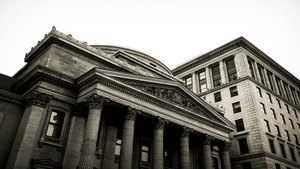S&P 500: -2.11% DOW: -2.21% NASDAQ: -2.59% 10-YR: 4.25%

Last Week on WallStreet - August 19th, 2023
What Happened?
The late summer blues continue for investors as the broad indices registered another week of losses - a third consecutive decline for the S&P 500 and Nasdaq Composite. In recent weeks, markets have witnessed a sort of reversion to the narrative that characterized the bear market of last year. That being, the persistent economic resilience fueling fears that the Federal Reserve might take further action to decelerate growth and moderate inflation - good news is bad news. The key difference is that significant strides have been made in taming inflation to this point. Yet, investors and the Federal Reserve are wondering if their efforts have been sufficient to push price growth lower and prevent any reacceleration.
Beneath the surface, none of the 11 S&P 500 sectors escaped unscathed this week. Technology (1.2%), Energy (1.2%), and Healthcare (1.6%) names suffered the least damage. Discretionary (4.2%) led the way down on international growth concerns and less optimistic earnings reports.
US Retail Sales Post Biggest Gain in Six Months. Amazon Prime Day Delivers
- Sales at U.S. retailers rose 0.7% in July, helped by strong Internet purchases on Amazon Prime Day
- Sales had been forecast to rise by 0.4%
- Purchases rose almost across the board with only new vehicles and auto parts declining
- Sales increased a sharp 1.4% at bars and restaurants, a good omen for the economy
The key takeaway - The impact of Americans launching their Amazon apps on Prime Day in search of deals on items like new shoes or back-to-school supplies was obvious in the retail sales figures for July. The jump in sales brings a breath of fresh air for retailers who have witnessed a tapering off in demand as consumers shift their spending from goods to services, such as dining out and travel. The data portrays a resilient American consumer who, in spite of heightened borrowing costs and inflation, continues to spend. This bodes well for the 'soft-landing' camp, which believes the economy can push through the potential headwinds without cascading into recession. Their 'hard-landing' counterparts, however, perceive this as further justification for the Federal Reserve to remain hawkish and tighten monetary policy to the economy's tipping point.
Fed Officials See 'Upside Risks' to Inflation Possibly Leading to More Rate Hikes, Minutes Show
- The minutes showed that "most" FOMC participants continued to see significant upside risks to inflation, which could require further tightening
- The document reiterated participants are committed to bringing policy to a restrictive level that facilitates a return to the 2 percent inflation target
- While there was agreement that inflation is “unacceptably high,” there also was indication “that a number of tentative signs that inflation pressures could be abating”
The key takeaway - While market pricing suggests investors are confident that the Federal Reserve has concluded its hiking cycle, the minutes reveal a higher degree of uncertainty among FOMC participants. Economists have been anticipating a slowing in the economy due to the effects of tightener monetary conditions for several months, however, it seems that the Fed's efforts have not materially impacted growth so far. Halting the tightening process before the undefined sufficiently restrictive level is achieved poses risks, especially with unemployment near all-time lows and a resilient consumer. This could stagnate inflation at its current levels, or worse, allow for a reacceleration. While recession is an undesirable outcome, untamed inflation is the most adverse scenario for the American economy and FOMC members seem quite concerned with managing these upside risks.
Leading Index for the Economy Falls for 16th Month in a Row - But Still No US Recession
- The leading economic index fell 0.4% in July and declined for the 16th month in a row
- The leading index is a gauge of 10 indicators designed to show whether the economy is getting better or worse.
- Seven of the 10 components fell in July
- However, a measure of current conditions, known as the coincident index, actually rose 0.4% in July
The key takeaway - Report after report reflects the robust state of the US economy, which is maintaining a steady pace of growth. The coincident indicator released here aggregates this data again demonstrating a steadfast economy. However, the leading economic index repeatedly indicates an economy poised to lose steam. Typically, a losing streak in the forward-looking gauge precedes a slowing or recessionary environment. Following the COVID-19 shock, many investors worry that structural changes solidified during that period may diminish the effectiveness of this indicator. Only time will tell if these historically reliable measures are ill-suited for today's economic landscape, or simply lagging.

From the Waterloo Watercooler
Housing affordability hit the worst levels in decades as the average mortgage rate jumped to 7.09%, the highest since 2002
England will square off against Spain in the Women’s World Cup final on Sunday after beating host country Australia
Barbie is now Warner Bros.’s highest-grossing domestic release ever. It earned more than $537 million, edging out Christopher Nolan’s The Dark Knight
Hollywood studios have reportedly offered concessions to striking writers promising humans, not AI, will be credited for works and access to viewership data



